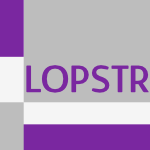59 papers:
 ICML-2015-QiuXHLC #estimation #matrix #process #robust
ICML-2015-QiuXHLC #estimation #matrix #process #robust- Robust Estimation of Transition Matrices in High Dimensional Heavy-tailed Vector Autoregressive Processes (HQ, SX, FH, HL, BC), pp. 1843–1851.
 SIGIR-2015-YunHER #latency #policy #web
SIGIR-2015-YunHER #latency #policy #web- Optimal Aggregation Policy for Reducing Tail Latency of Web Search (JMY, YH, SE, SR), pp. 63–72.
 SAC-2015-SeifertSG #personalisation #set #towards
SAC-2015-SeifertSG #personalisation #set #towards- Towards a feature-rich data set for personalized access to long-tail content (CS, JS, MG), pp. 1031–1038.
 ASPLOS-2015-HaqueEHEBM #incremental #interactive #latency #named #parallel
ASPLOS-2015-HaqueEHEBM #incremental #interactive #latency #named #parallel- Few-to-Many: Incremental Parallelism for Reducing Tail Latency in Interactive Services (MEH, YHE, YH, SE, RB, KSM), pp. 161–175.
 HPCA-2015-HsuZLMWMTD #named #query
HPCA-2015-HsuZLMWMTD #named #query- Adrenaline: Pinpointing and reining in tail queries with quick voltage boosting (CHH, YZ, MAL, DM, TFW, JM, LT, RGD), pp. 271–282.
 ASE-2014-CohenM
ASE-2014-CohenM- The confidence in our k-tails (HC, SM), pp. 605–610.
 VLDB-2015-LiLGSZDFH14 #approach
VLDB-2015-LiLGSZDFH14 #approach- A Confidence-Aware Approach for Truth Discovery on Long-Tail Data (QL, YL, JG, LS, BZ, MD, WF, JH), pp. 425–436.
 CHI-2014-JuhlinEO #video
CHI-2014-JuhlinEO #video- Long tail TV revisited: from ordinary camera phone use to pro-am video production (OJ, AE, EÖ), pp. 1325–1334.
 CIKM-2014-Huo0LM #performance #query
CIKM-2014-Huo0LM #performance #query- Improving Tail Query Performance by Fusion Model (SH, MZ, YL, SM), pp. 559–568.
 CIKM-2014-SongWCW #comprehension #query
CIKM-2014-SongWCW #comprehension #query- Transfer Understanding from Head Queries to Tail Queries (YS, HW, WC, SW), pp. 1299–1308.
 ICML-c2-2014-HsuS
ICML-c2-2014-HsuS- Heavy-tailed regression with a generalized median-of-means (DH, SS), pp. 37–45.
 KDD-2014-HuHA #e-commerce #modelling #scalability #social
KDD-2014-HuHA #e-commerce #modelling #scalability #social- Style in the long tail: discovering unique interests with latent variable models in large scale social E-commerce (DJH, RH, JA), pp. 1640–1649.
 SIGIR-2014-JeonKHHECR #parallel #predict #web
SIGIR-2014-JeonKHHECR #parallel #predict #web- Predictive parallelization: taming tail latencies in web search (MJ, SK, SwH, YH, SE, ALC, SR), pp. 253–262.
 KDIR-KMIS-2013-MeiselBI #mining #query
KDIR-KMIS-2013-MeiselBI #mining #query- Mining the Long Tail of Search Queries — Finding Profitable Patterns (MM, MB, AI), pp. 225–229.
 RecSys-2013-Shi #approach #graph #recommendation #similarity
RecSys-2013-Shi #approach #graph #recommendation #similarity- Trading-off among accuracy, similarity, diversity, and long-tail: a graph-based recommendation approach (LS), pp. 57–64.
 SIGIR-2013-AlyHD #named #using
SIGIR-2013-AlyHD #named #using- Taily: shard selection using the tail of score distributions (RA, DH, TD), pp. 673–682.
 SAC-2013-ZhongM #analysis #empirical #game studies
SAC-2013-ZhongM #analysis #empirical #game studies- Google play is not a long tail market: an empirical analysis of app adoption on the Google play app market (NZ, FM), pp. 499–504.
 VLDB-2012-YinCLYC #recommendation
VLDB-2012-YinCLYC #recommendation- Challenging the Long Tail Recommendation (HY, BC, JL, JY, CC), pp. 896–907.
 CHI-2012-BernsteinTDLH #query
CHI-2012-BernsteinTDLH #query- Direct answers for search queries in the long tail (MSB, JT, STD, DJL, EH), pp. 237–246.
 CIKM-2012-ZhouLZ12a #collaboration #query #ranking
CIKM-2012-ZhouLZ12a #collaboration #query #ranking- Collaborative ranking: improving the relevance for tail queries (KZ, XL, HZ), pp. 1900–1904.
 SIGIR-2012-BonchiPSVV #performance #query #recommendation
SIGIR-2012-BonchiPSVV #performance #query #recommendation- Efficient query recommendations in the long tail via center-piece subgraphs (FB, RP, FS, HV, RV), pp. 345–354.
 CIKM-2011-SteinGH #clustering #precise #web
CIKM-2011-SteinGH #clustering #precise #web- Beyond precision@10: clustering the long tail of web search results (BS, TG, DH), pp. 2141–2144.
 CIKM-2011-TanevaKW #image
CIKM-2011-TanevaKW #image- Finding images of difficult entities in the long tail (BT, MK, GW), pp. 189–194.
 RecSys-2011-LeeL #analysis #behaviour #music #recommendation
RecSys-2011-LeeL #analysis #behaviour #music #recommendation- My head is your tail: applying link analysis on long-tailed music listening behavior for music recommendation (KL, KL), pp. 213–220.
 RecSys-2011-Sundaresan #recommendation
RecSys-2011-Sundaresan #recommendation- Recommender systems at the long tail (NS), pp. 1–6.
 RTA-2011-NishidaV #recursion
RTA-2011-NishidaV #recursion- Program Inversion for Tail Recursive Functions (NN, GV), pp. 283–298.
 CASE-2010-LeungLECS #detection
CASE-2010-LeungLECS #detection- Detection and tracking of low contrast human sperm tail (CL, ZL, NE, RFC, YS), pp. 263–268.
 DAC-2010-GaoYWY #analysis #correlation #estimation #performance #statistics
DAC-2010-GaoYWY #analysis #correlation #estimation #performance #statistics- Efficient tail estimation for massive correlated log-normal sums: with applications in statistical leakage analysis (MG, ZY, YW, ZY), pp. 475–480.
 CSEET-2010-Broman #education #question #re-engineering
CSEET-2010-Broman #education #question #re-engineering- Should Software Engineering Projects Be the Backbone or the Tail of Computing Curricula? (DB), pp. 153–156.
 ITiCSE-2010-Rubio-Sanchez #programming #recursion
ITiCSE-2010-Rubio-Sanchez #programming #recursion- Tail recursive programming by applying generalization (MRS), pp. 98–102.
 ILC-2010-YasugiKHU #continuation #recursion
ILC-2010-YasugiKHU #continuation #recursion- Managing continuations for proper tail recursion (MY, TK, TH, SU), pp. 65–72.
 SIGIR-2010-PandeyPFJ #query
SIGIR-2010-PandeyPFJ #query- Estimating advertisability of tail queries for sponsored search (SP, KP, MF, VJ), pp. 563–570.
 ITiCSE-2009-Rubio-SanchezV #recursion #using
ITiCSE-2009-Rubio-SanchezV #recursion #using- Tail recursion by using function generalization (MRS, JÁVI), p. 394.
 CHI-2008-EvansC #algorithm #social #web
CHI-2008-EvansC #algorithm #social #web- Augmented information assimilation: social and algorithmic web aids for the information long tail (BE, SC), pp. 989–998.
 ICPR-2008-WangZZ #multi
ICPR-2008-WangZZ #multi- Multivariate Laplace Filter: A heavy-tailed model for target tracking (DW, CZ, XZ), pp. 1–4.
 KDD-2008-WuHW #information management #wiki
KDD-2008-WuHW #information management #wiki- Information extraction from Wikipedia: moving down the long tail (FW, RH, DSW), pp. 731–739.
 RecSys-2008-ParkT #how #recommendation
RecSys-2008-ParkT #how #recommendation- The long tail of recommender systems and how to leverage it (YJP, AT), pp. 11–18.
 HCI-AS-2007-CaiX #design #sorting
HCI-AS-2007-CaiX #design #sorting- Designing Product List on E-tailing Websites: The Effect of Sorting on Consumer Decision (SC, YX), pp. 104–113.
 KDD-2007-Anderson
KDD-2007-Anderson- Calculating latent demand in the long tail (CA), p. 1.
 MLDM-2007-GeczyIAH #information management #interactive #intranet
MLDM-2007-GeczyIAH #information management #interactive #intranet- Long Tail Attributes of Knowledge Worker Intranet Interactions (PG, NI, SA, KH), pp. 419–433.
 SIGIR-2007-ChaudhuriCKS #multi #query
SIGIR-2007-ChaudhuriCKS #multi #query- Heavy-tailed distributions and multi-keyword queries (SC, KWC, ACK, LS), pp. 663–670.
 SIGIR-2007-DowneyDH #query #web
SIGIR-2007-DowneyDH #query #web- Heads and tails: studies of web search with common and rare queries (DD, STD, EH), pp. 847–848.
 STOC-2006-DinurFKO #bound #fourier #on the
STOC-2006-DinurFKO #bound #fourier #on the- On the fourier tails of bounded functions over the discrete cube (ID, EF, GK, RO), pp. 437–446.
 CSL-2006-Chatterjee #concurrent #game studies
CSL-2006-Chatterjee #concurrent #game studies- Concurrent Games with Tail Objectives (KC), pp. 256–270.
 HT-2004-BerleantMABDDEGL #approach #documentation #lightweight
HT-2004-BerleantMABDDEGL #approach #documentation #lightweight- Head-tail display: a lightweight approach to query-dependent document display (DB, JM, MA, JB, RD, TD, LE, CG, KHL), pp. 22–23.
 ITiCSE-2004-Ford #programming
ITiCSE-2004-Ford #programming- Managing the programming tail (LF), p. 249.
 ITiCSE-2004-To #case study
ITiCSE-2004-To #case study- Determinants affecting organizations’ intent to adopt e-tailing: a study based on innovation theories (LMT), p. 243.
 ESOP-2003-ClementsF #recursion #semantics #stack
ESOP-2003-ClementsF #recursion #semantics #stack- A Tail-Recursive Semantics for Stack Inspections (JC, MF), pp. 22–37.
 SAS-2003-Minamide
SAS-2003-Minamide- Selective Tail Call Elimination (YM), pp. 153–170.
 ICALP-2001-ShankarKSR
ICALP-2001-ShankarKSR- Minimal Tail-Biting Trellises for Certain Cyclic Block Codes Are Easy to Construct (PS, PNAK, HS, BSR), pp. 627–638.
 CC-2001-Gregg #scheduling
CC-2001-Gregg #scheduling- Comparing Tail Duplication with Compensation Code in Single Path Global Instruction Scheduling (DG), pp. 200–212.
 LOPSTR-1999-RossOS #recursion #source code
LOPSTR-1999-RossOS #recursion #source code- Making Mercury Programs Tail Recursive (PR, DO, ZS), pp. 196–215.
 PLDI-1998-Clinger #performance #recursion
PLDI-1998-Clinger #performance #recursion- Proper Tail Recursion and Space Efficiency (WDC), pp. 174–185.
 SAC-1997-Vakhania #parallel
SAC-1997-Vakhania #parallel- Sequencing jobs with readiness times and tails on parallel machines (NV), pp. 438–446.
 ICALP-1992-MatousekS #algorithm
ICALP-1992-MatousekS #algorithm- A Tail Estimate for Mulmuley’s Segment Intersection Algorithm (JM, RS), pp. 427–438.
 CADE-1992-HeskethBS #reasoning #recursion #source code #synthesis #using
CADE-1992-HeskethBS #reasoning #recursion #source code #synthesis #using- Using Middle-Out Reasoning to Control the Synthesis of Tail-Recursive Programs (JH, AB, AS), pp. 310–324.
 PODS-1991-Ross #composition #logic programming #recursion #source code
PODS-1991-Ross #composition #logic programming #recursion #source code- Modular Acyclicity and Tail Recursion in Logic Programs (KAR), pp. 92–101.
 LFP-1990-Hanson #performance #recursion #stack
LFP-1990-Hanson #performance #recursion #stack- Efficient Stack Allocation for Tail-Recursive Languages (CH), pp. 106–118.
 FPCA-1985-Debray85 #optimisation #prolog #recursion #source code
FPCA-1985-Debray85 #optimisation #prolog #recursion #source code- Optimizing Almost-Tail-Recursive Prolog Programs (SKD), pp. 204–219.
 ICML-2015-QiuXHLC #estimation #matrix #process #robust
ICML-2015-QiuXHLC #estimation #matrix #process #robust SIGIR-2015-YunHER #latency #policy #web
SIGIR-2015-YunHER #latency #policy #web SAC-2015-SeifertSG #personalisation #set #towards
SAC-2015-SeifertSG #personalisation #set #towards ASPLOS-2015-HaqueEHEBM #incremental #interactive #latency #named #parallel
ASPLOS-2015-HaqueEHEBM #incremental #interactive #latency #named #parallel HPCA-2015-HsuZLMWMTD #named #query
HPCA-2015-HsuZLMWMTD #named #query ASE-2014-CohenM
ASE-2014-CohenM VLDB-2015-LiLGSZDFH14 #approach
VLDB-2015-LiLGSZDFH14 #approach CHI-2014-JuhlinEO #video
CHI-2014-JuhlinEO #video CIKM-2014-Huo0LM #performance #query
CIKM-2014-Huo0LM #performance #query CIKM-2014-SongWCW #comprehension #query
CIKM-2014-SongWCW #comprehension #query ICML-c2-2014-HsuS
ICML-c2-2014-HsuS KDD-2014-HuHA #e-commerce #modelling #scalability #social
KDD-2014-HuHA #e-commerce #modelling #scalability #social SIGIR-2014-JeonKHHECR #parallel #predict #web
SIGIR-2014-JeonKHHECR #parallel #predict #web KDIR-KMIS-2013-MeiselBI #mining #query
KDIR-KMIS-2013-MeiselBI #mining #query RecSys-2013-Shi #approach #graph #recommendation #similarity
RecSys-2013-Shi #approach #graph #recommendation #similarity SIGIR-2013-AlyHD #named #using
SIGIR-2013-AlyHD #named #using SAC-2013-ZhongM #analysis #empirical #game studies
SAC-2013-ZhongM #analysis #empirical #game studies VLDB-2012-YinCLYC #recommendation
VLDB-2012-YinCLYC #recommendation CHI-2012-BernsteinTDLH #query
CHI-2012-BernsteinTDLH #query CIKM-2012-ZhouLZ12a #collaboration #query #ranking
CIKM-2012-ZhouLZ12a #collaboration #query #ranking SIGIR-2012-BonchiPSVV #performance #query #recommendation
SIGIR-2012-BonchiPSVV #performance #query #recommendation CIKM-2011-SteinGH #clustering #precise #web
CIKM-2011-SteinGH #clustering #precise #web CIKM-2011-TanevaKW #image
CIKM-2011-TanevaKW #image RecSys-2011-LeeL #analysis #behaviour #music #recommendation
RecSys-2011-LeeL #analysis #behaviour #music #recommendation RecSys-2011-Sundaresan #recommendation
RecSys-2011-Sundaresan #recommendation RTA-2011-NishidaV #recursion
RTA-2011-NishidaV #recursion CASE-2010-LeungLECS #detection
CASE-2010-LeungLECS #detection DAC-2010-GaoYWY #analysis #correlation #estimation #performance #statistics
DAC-2010-GaoYWY #analysis #correlation #estimation #performance #statistics CSEET-2010-Broman #education #question #re-engineering
CSEET-2010-Broman #education #question #re-engineering ITiCSE-2010-Rubio-Sanchez #programming #recursion
ITiCSE-2010-Rubio-Sanchez #programming #recursion ILC-2010-YasugiKHU #continuation #recursion
ILC-2010-YasugiKHU #continuation #recursion SIGIR-2010-PandeyPFJ #query
SIGIR-2010-PandeyPFJ #query ITiCSE-2009-Rubio-SanchezV #recursion #using
ITiCSE-2009-Rubio-SanchezV #recursion #using CHI-2008-EvansC #algorithm #social #web
CHI-2008-EvansC #algorithm #social #web ICPR-2008-WangZZ #multi
ICPR-2008-WangZZ #multi KDD-2008-WuHW #information management #wiki
KDD-2008-WuHW #information management #wiki RecSys-2008-ParkT #how #recommendation
RecSys-2008-ParkT #how #recommendation HCI-AS-2007-CaiX #design #sorting
HCI-AS-2007-CaiX #design #sorting KDD-2007-Anderson
KDD-2007-Anderson MLDM-2007-GeczyIAH #information management #interactive #intranet
MLDM-2007-GeczyIAH #information management #interactive #intranet SIGIR-2007-ChaudhuriCKS #multi #query
SIGIR-2007-ChaudhuriCKS #multi #query SIGIR-2007-DowneyDH #query #web
SIGIR-2007-DowneyDH #query #web STOC-2006-DinurFKO #bound #fourier #on the
STOC-2006-DinurFKO #bound #fourier #on the CSL-2006-Chatterjee #concurrent #game studies
CSL-2006-Chatterjee #concurrent #game studies HT-2004-BerleantMABDDEGL #approach #documentation #lightweight
HT-2004-BerleantMABDDEGL #approach #documentation #lightweight ITiCSE-2004-Ford #programming
ITiCSE-2004-Ford #programming ITiCSE-2004-To #case study
ITiCSE-2004-To #case study ESOP-2003-ClementsF #recursion #semantics #stack
ESOP-2003-ClementsF #recursion #semantics #stack SAS-2003-Minamide
SAS-2003-Minamide ICALP-2001-ShankarKSR
ICALP-2001-ShankarKSR CC-2001-Gregg #scheduling
CC-2001-Gregg #scheduling LOPSTR-1999-RossOS #recursion #source code
LOPSTR-1999-RossOS #recursion #source code PLDI-1998-Clinger #performance #recursion
PLDI-1998-Clinger #performance #recursion SAC-1997-Vakhania #parallel
SAC-1997-Vakhania #parallel ICALP-1992-MatousekS #algorithm
ICALP-1992-MatousekS #algorithm CADE-1992-HeskethBS #reasoning #recursion #source code #synthesis #using
CADE-1992-HeskethBS #reasoning #recursion #source code #synthesis #using PODS-1991-Ross #composition #logic programming #recursion #source code
PODS-1991-Ross #composition #logic programming #recursion #source code LFP-1990-Hanson #performance #recursion #stack
LFP-1990-Hanson #performance #recursion #stack FPCA-1985-Debray85 #optimisation #prolog #recursion #source code
FPCA-1985-Debray85 #optimisation #prolog #recursion #source code









